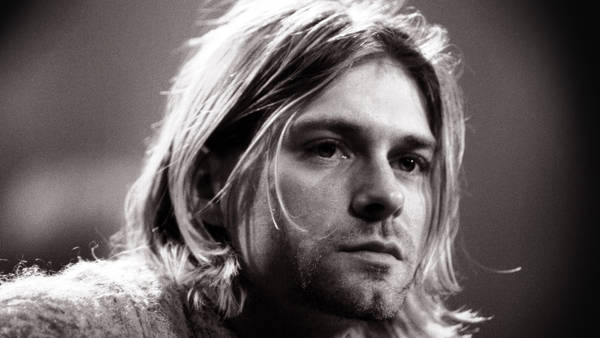In the two intervening years between the release of Bleach and the band’s million selling masterpiece Nevermind Cobain would come to the realisation that repression was just as important as release when writing the perfect guitar track.
By 1991 Cobain was no longer looking to fit in with Seattle’s grunge scene and had instead cast his eye towards some of his favourite bands and artists for inspiration. Killing Joke, Neil Young and The Pixies now came to the fore.
From Killing Joke he learnt the art of the melodious proto-industrial riff; simple guitar lines that twist and turn seductively while maintaining a fundamental and unshakeable sense of menace (Cobain would lift the riff for “Come As You Are” from Joke’s classic “Eighties”).
From Young, the man whose lyrics he would quote in his suicide note, Cobain learnt to distil emotional resonance into his simple strained riffs. He also uncovered how to contrast heart breaking pop verses with discordant bluster and towering anthemic solos; an art that Young perfected on 1974’s On The Beach.
The Pixies, however, left the biggest impression. Kurt didn’t scream like Frank Black and Krist Novoselic could never quite groove like Kim Deal, but what they pinched was not a playing technique but an idea, a format, a conceptual approach to music: the quiet-loud dynamic. The Pixies didn’t invent this contrast, but they had perfected it, and most importantly they were on Cobain’s radar.
Cobain took these divergent themes and this new dynamic and made Nevermind, an album of great contrasts. Low-key heartache stood next to towering skyscraper-sized riffs, muted pent up melancholy paved the way for violent out bursts, and catchy to the point pop songs somehow morphed into entrancing distorted drones. The brutal, and frankly obvious, bludgeoning’s of Bleach were gone; now Nirvana teased and enticed listeners before unleashing hell. This was intelligent, textured music.
By 1993 Cobain had reinvented mainstream rock music and In Utero was an all-encompassing masterpiece of vile vitriol, grinding riffs, fast punk assaults and tender expressive pop master works. Interestingly, and perhaps predictably, Cobain’s final artistic outpouring was marked by rebellion. At times, as on the brilliant “Scentless Apprentice”, it felt as if Cobain was trying to escape and destroy his new pop formula as a series of endless crunching riffs and grotesquely deformed gnawing notes were overlaid with telling primal screams of “Go Away, Go Away”. However, those nagging doubts were quickly erased by the bleak brilliance of the album’s very next track: “Heart Shaped Box”, another quiet/loud masterstroke complete with an unforgettable fuzzed out solo.
Cobain’s new take on the quiet and loud dynamic captured the world’s imagination and continues to define mainstream American rock to this very day. Everyone from post hardcore emo stars My Chemical Romance and Jared Leto’s arena rocking Thirty Seconds To Mars to former band mate Dave Grohl’s globe straddling Foo Fighters are still using the Nirvana formula to achieve world domination. It remains the simplest and most effective way to write irresistible pop singles for the masses while retaining your band’s raw rock & roll aesthetic.












